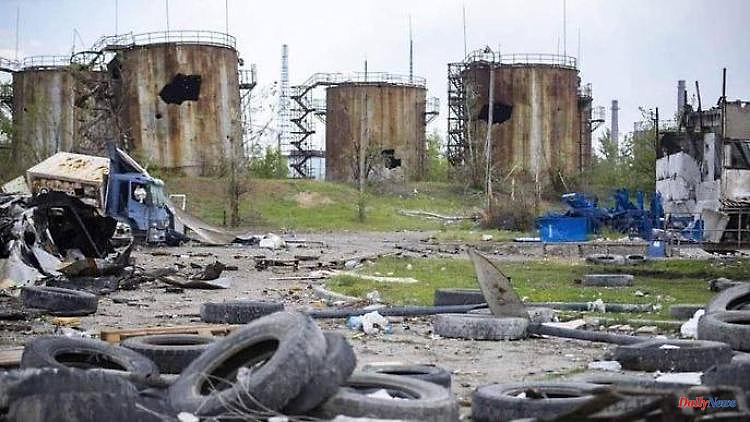A ceasefire will allow Ukrainians to leave the Azot chemical plant for the Russian-controlled Luhansk region. This is what the Russian Ministry of Defense announced. But the supposedly humanitarian operation is being torpedoed and misused by Ukrainian forces, according to the accusation.
Russia has accused Ukraine of preventing the evacuation of civilians from a chemical plant in the besieged eastern Ukrainian city of Sieverodonetsk. The Defense Ministry in Moscow said Russia had created a corridor to bring civilians from the Azot factory to safety. However, the "Kiev authorities" "cynically caused the humanitarian operation to fail."
On Tuesday, Russia announced a humanitarian corridor that would be open for 12 hours. According to Russian information, civilians entrenched in the Azot plant were to be given the opportunity to leave Sievjerodonetsk in the direction of the Luhansk region controlled by pro-Russian separatists.
However, the Ukrainian forces broke the ceasefire "several times" and abused the humanitarian operation to move their own soldiers to more favorable positions, the Russian Defense Ministry said. The claims could not be independently verified.
The Russian-backed separatists have now again announced a humanitarian corridor for Sieverodonetsk. Separatist leader Leonid Pasechnik is quoted by the Interfax news agency as saying that the corridor will be reopened so that civilians can exit the Asot chemical plant.
According to Ukrainian sources, hundreds of civilians are currently seeking shelter at the Azot chemical plant. The factory is constantly being bombed. During its siege of Sieverodonetsk, Russia had already repeatedly announced ceasefires in order to set up evacuation corridors for civilians. However, the ceasefires were broken several times, with Moscow and Kyiv accusing each other of breaching their word.
Fierce fighting has been going on in Sievjerodonetsk for weeks. A capture of the city would open the way for the Russian army to Sloviansk and to Kramatorsk, the capital of the neighboring Donetsk region.
The situation in the Azot chemical plant is reminiscent of the Azov steelworks in the southern Ukrainian port of Mariupol, which was fought over for weeks. The last Ukrainian fighters in Mariupol surrendered between May 16 and 20 after weeks of entrenching themselves in the tunnel system at the Azov steelworks site. Ukrainian civilians also stayed there for a long time.












